Our last full day in Geneva was spent walking the old city (again) and visiting the Maison Tavel (Tavel House), the oldest house in Geneva. Along the way was passed through the park adjacent to the University of Geneva containing many distractions for wayward students.
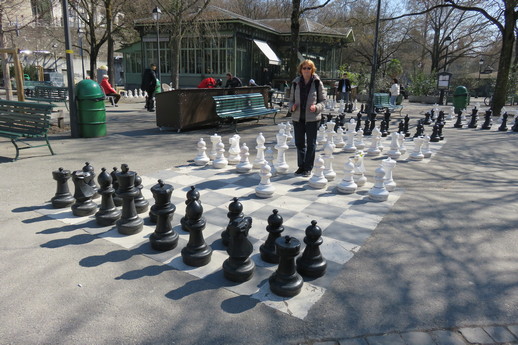
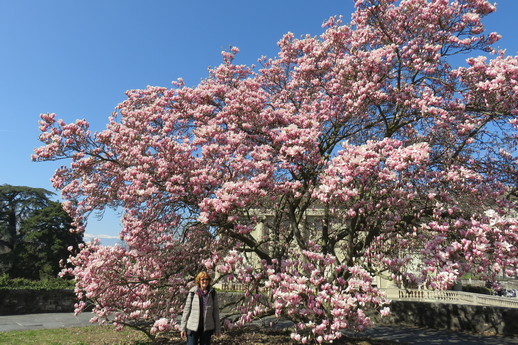
Maison Tavel was built in the 12th century by the Maison family. In 1334, the house was reconstructed following a devastating fire. In 1963, the house was purchased by the city of Geneva and converted into a museum.
A detailed 3D model takes up the greater part of the Maison Tavel attic. Architect Auguste Magnin spent 18 years creating this imposing relief map of Geneva before the destruction of its fortifications in 1850 and subsequent transformation into the modern city we see today. The model is constructed entirely of metal. The houses and fortifications are in zinc, and the roofs in copper. Composed of 86 sections, it covers a surface area of 32 m². The “Magnin Relief Map” was presented for the first time at the 1896 National Exhibition in Geneva.
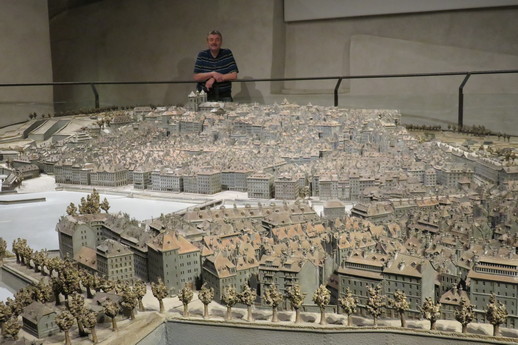
St. Peter’s Cathedral was build between 1160 and 1252. Alas, the interior of the Cathedral was demolished in 1535, when Geneva’s residents accepted the Reformation and destroyed all the altars, statues and most of the paintings in a rage inspired by John Calvin (a resident of Geneva at the time). The Cathedral superstructure and spire escaped undamaged though.
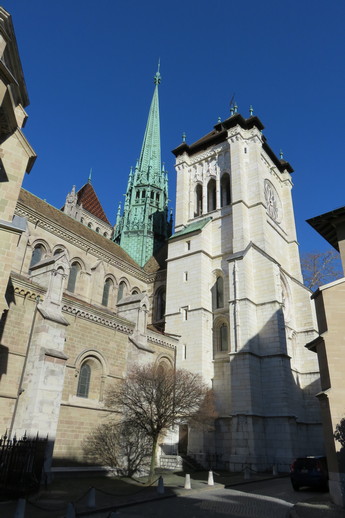
We were blessed with the very best of weather during our visit to Geneva and despite it being our longest stop (of seven nights), there remained much to do as we departed for our next location in Switzerland.

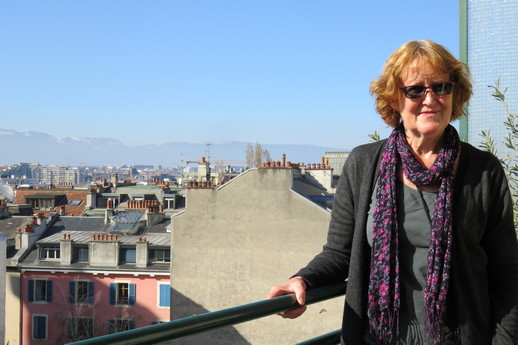
We depart Geneva for Bern, Switzerland’s capital, expecting more good weather and places to explore.
Travelling network setup
I thought it may be interesting for our dear readers to view the travelling network setup I have been using on this trip.
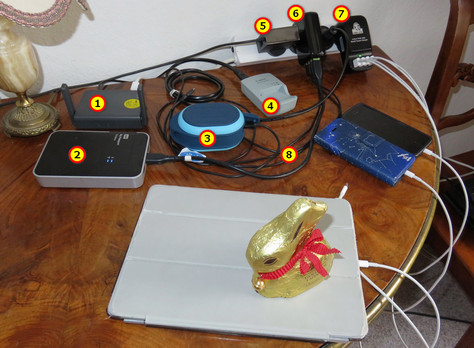
The four way power strip provides power to items 4, 5, 6 and 7.
1. Travel wireless router with switch programmed VPN tunnel
2. 1TB wireless hard disk with SD card reader
3. Water-resistant bluetooth speaker
4. Canon camera battery charger
5. Google Chromecast USB power supply
6. Four port USB power supply (4 x 1A)
7. Four port USB power supply (2 x 2.4A [iPads] & 2 x 1A [iPhones])
8. Micro-USB leads for charging other portable bluetooth devices
Arriving at new accommodation, these items are deployed in a suitable location near the existing network router and connected using a network cable (preferably) or wireless (otherwise).
Our portable devices (2 x iPhones, 2 x iPads, 1 x Dell laptop, 1 x Google Chromecast, 1 x 1TB wireless hard disk and 1 x Canon camera) are connected to a private wireless network provided by item 1 completely independent and isolated from any external networks.
I have configured item 1 to connect to our home in East Maitland via an encrypted virtual private network (VPN) tunnel routing all traffic such that it appears we are in Australia. This allows us to access internet content that may be otherwise blocked from Australia. This is the case for all ABC iView content and allows us to watch the ABC news, 7:30 Report or Four Corners, for example. This function is controlled via a switch on the side of item 1 and is turned on as required.
The Google Chromecast is plugged into the TV and allows us to stream content to the TV rather than view it on the iPhone, iPad or the Dell laptop. This works for all iView, Netflix, YouTube and other supported services.
The water-resistant bluetooth speaker (item 3) allows me to listen to ABC AM, PM and a number of favourite ABC and BBC podcasts while I’m in the bathroom (and anywhere else within our accommodation for that matter). It has great bass response and also makes my favourite tunes sound great even when I’m not in the shower. 🙂
It only takes a few minutes to setup this system on arrival and has proven to provide a secure and reliable internet connection for all our devices.
great weather indeed. Pity Annecy was so bad. It’s always been glorious when we visited. You have sure packed in things to do and see and the reads have been fab and funny, if not a bit technically overwhelming. Still, we all know who you are 🤗. Love you last days. Australia is chilling down for winter 💕💕
I thought the chocolate Easter Bunny was the main portable power supply / control devise / router / and intelligence machine of your network? For God’s sake don’t eat it till Easter Sunday or the whole system will collapse and your home in Oz will disappear into the virtual world forever. We then might never see you again except via our laptop screen!!!!!!
Seriously Gerard, you’ve been watching way too much science fiction! Consumption of said chocolate bunny will only result in food poisoning as it has a use-by date of 2009 and may actually be an ornament given its reported age. However, turning on the lamp in the left rear corner of the image did teleport me to a local bar where I was able to get wiped out on a single pangalactic gargle blaster.
I agree with Gerard, the bunny definitely took my eye – far more attractive than the technology, if not as useful. I am wondering how the rest of the world travels without the aid of your system. They don’t know what they are missing – being “in Australia” while also being overseas!
I am both amazed and amused by your methods of travel.
Dear Dianne,
Thanks for your question. Let me outline what an unsophisticated traveller is required to do:
1. Arrive at accommodation; determine WiFi access details.
2. Configure each WiFi enabled device with these access details. [As the general default configuration for most public WiFi access points is to isolate clients, this then prohibits the use of streaming dongles (like a Google Chromecast) which must be able to be “seen” on the network by the commanding client. This means that once the dongle is configured on the network (by talking to its own private WiFi access point), it “disappears” and is not able to be seen on that network again until it is reset to factory defaults.]
3. Each WiFi device is now able to access the internet and is solely responsible for its own security and protection against cyber-security threats.
4. Internet browsing takes place based on the knowledge of the location of the client – this means general browsing activities are overlaid with content in Italian, French and German (for example, based on our current trip). Google can translate these pages into English.
5. Access to services that are blocked by geo-location (like all Australian ABC iView content) requires individual VPN access configuration for each client and the remote VPN host in Australia (or the target country) must be able to support concurrent VPN connections.
6. When you depart the location, unless the WiFi configuration in each device is specifically purged it remains in memory until the device is reset to defaults.
7. Your device information is able to viewed by network scanning software at the venue.
8. The configuration of the venue’s network is completely unknown – you have no idea if they are running a firewall or blocking any network ports. It’s a black hole of hope and assumptions.
I have invested time and money to create a secure and portable system that removes all the negative aspects of public WiFi access. I’m not paranoid – I just understand the risks.